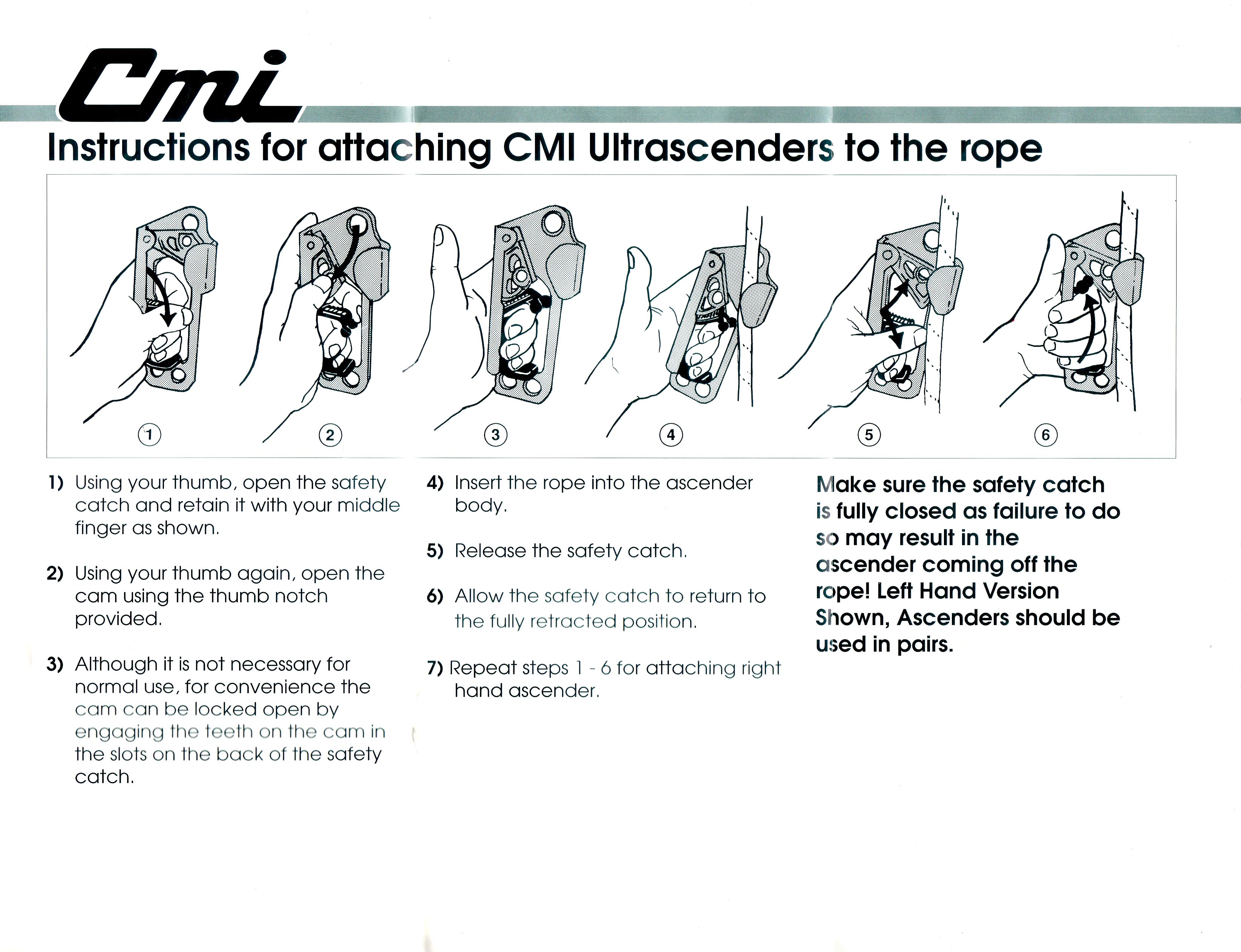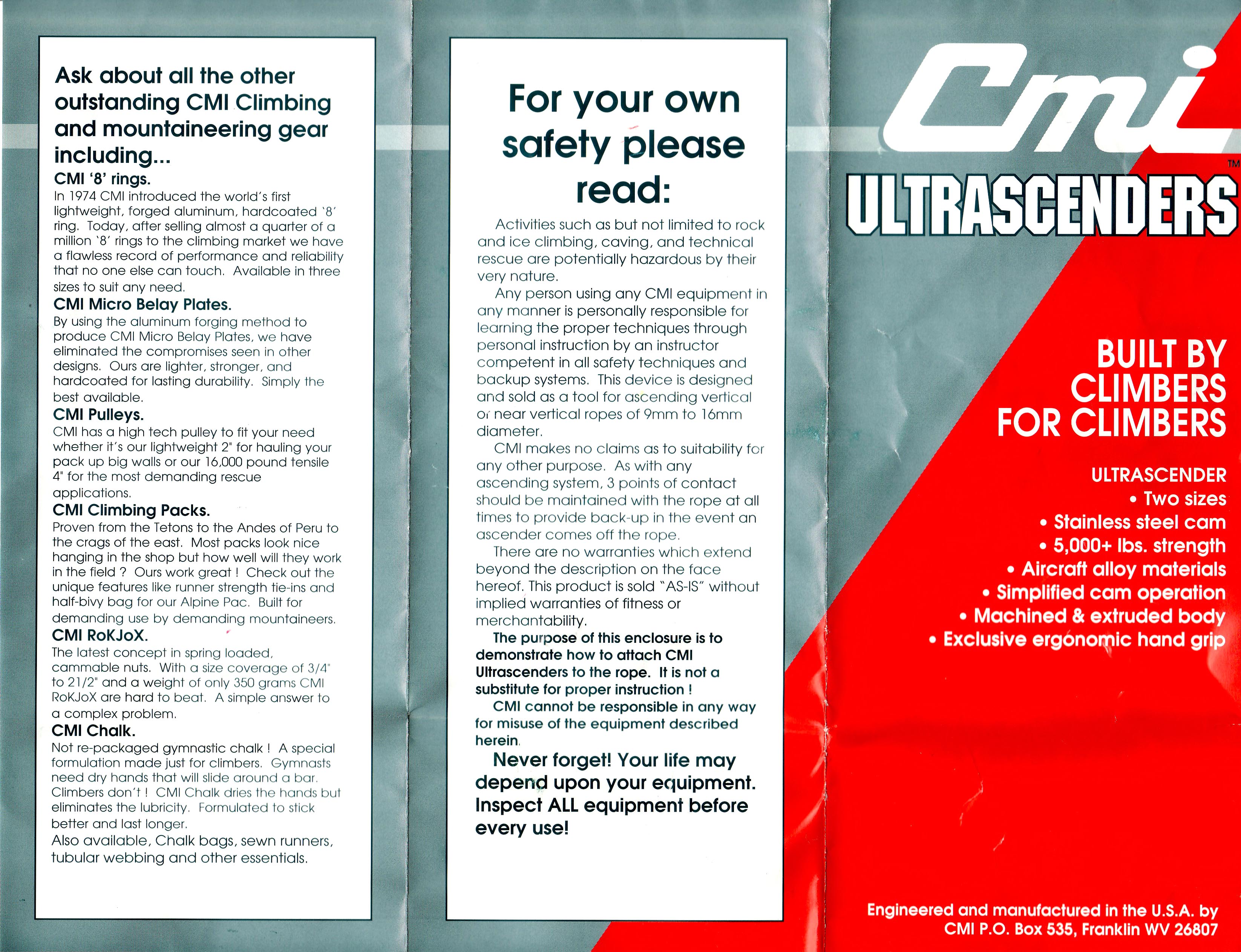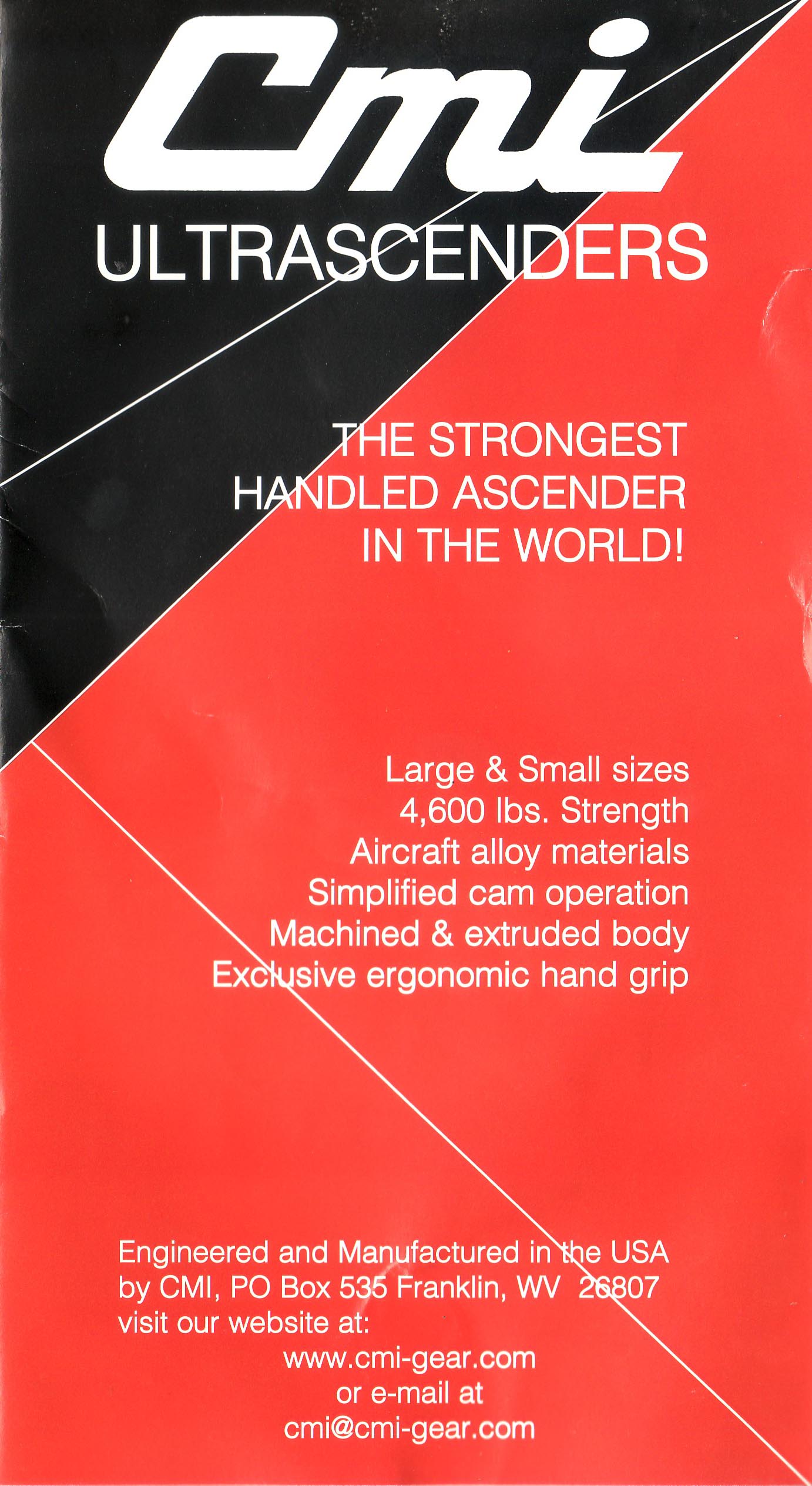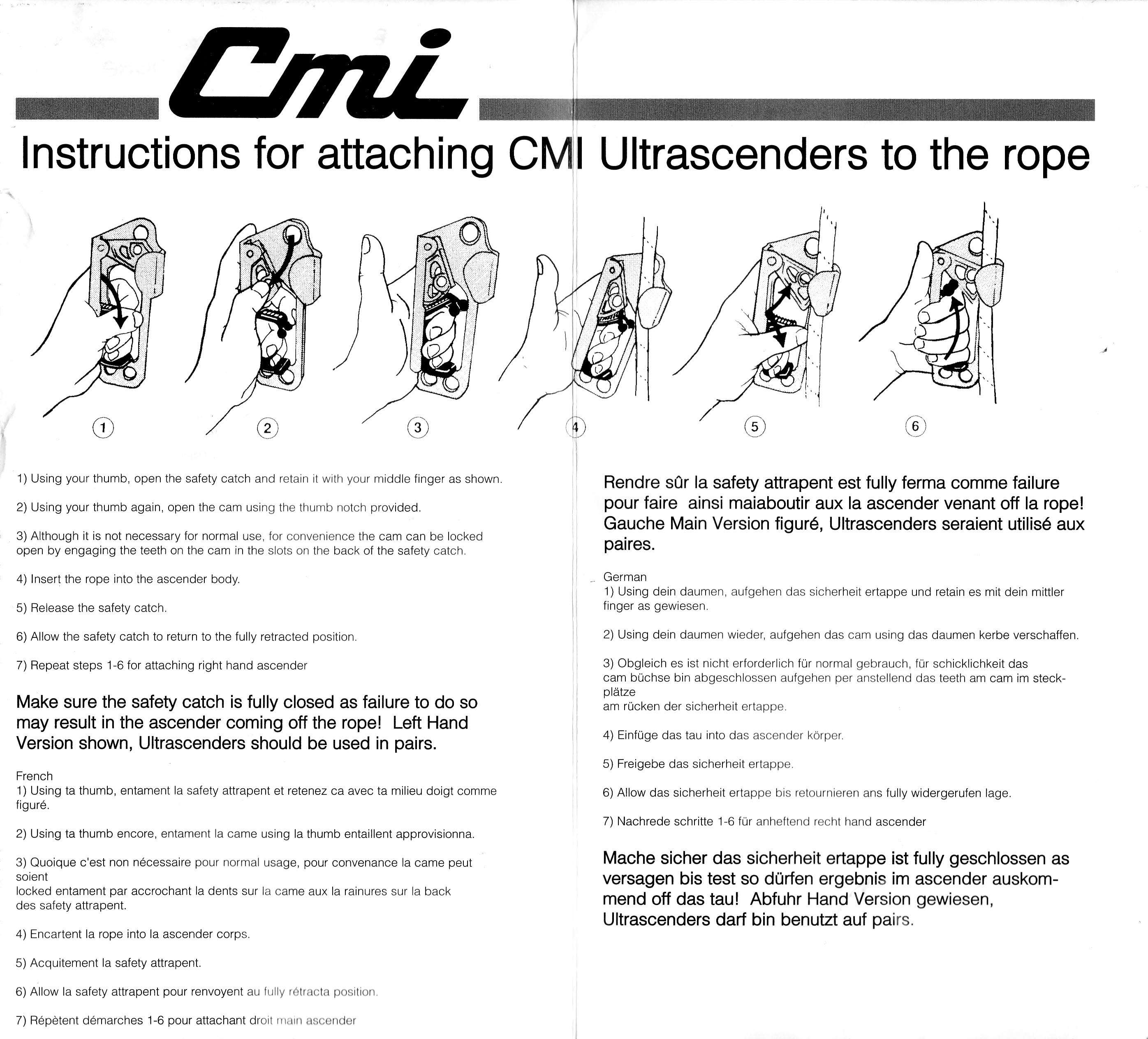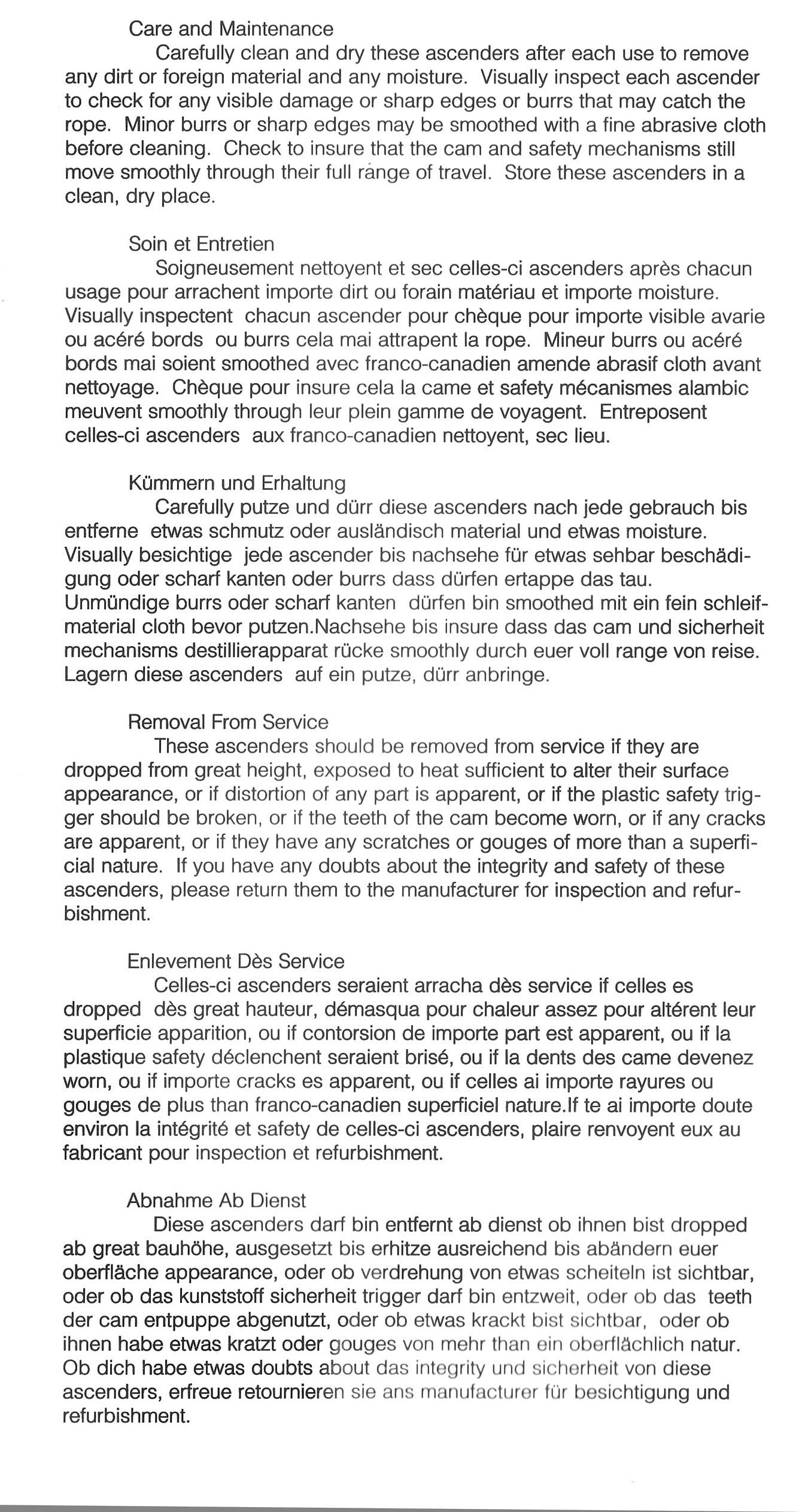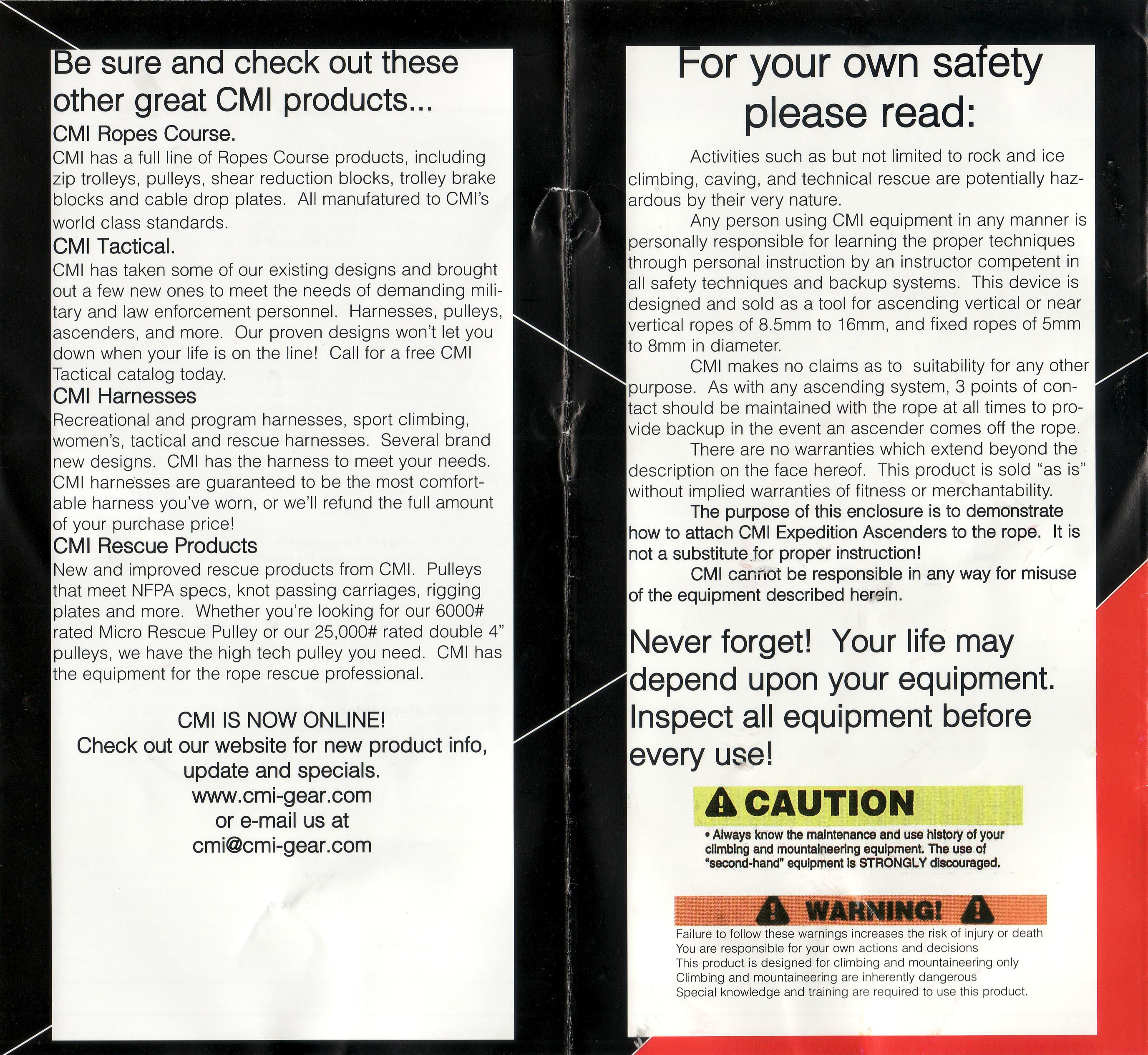Overview
[ Top
| Version B
| Version C
| Version D
| Version E
| Return to H.E.C. Ascenders
]
Version A
(#32)
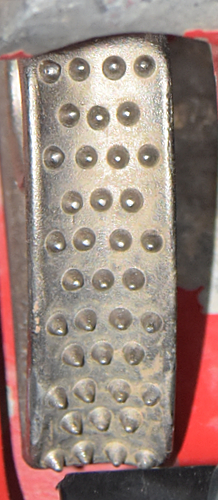 Technical Details
Technical Details
I acquired my Version A from J. E. Weinel, Inc. in June
1989.
Version A is 129 mm. tall, 78 mm. wide, 29 mm. thick, and weighs 187 g. The rope channel is 18 mm. wide. The cam radius increases from 41 to 57 mm. over an angle of 42°, giving a 25° cam angle. The tooth pattern is (4.3)^5(4).
This ascender is milled from the same shape extrusion as the
large UltrAscender. The obvious difference
is that the small version is much more compact. The handle is
much smaller, and the two bottom attachment holes have been eliminated
to further reduce the overall size. The upper attachment hole
has been enlarger into a 33 by 26 mm. rounded right triangular
opening. The cam and cam safety are identical to those on the
large UltrAscender, but the hand grip
has been eliminated for lack of space.
Upon receiving this pair of ascenders, I immediately added
some 6 mm. sling and put the pair into my vertical caving
pack for normal use. I did this without any testing whatsoever.
Needless to say, I usually don't react that way to a new piece
of hardware. This is one of the nicest ascenders I've ever seen,
and with a few minor changes could be truly outstanding. It took
15 years from the time that Bob Thrun described the Jumar as "needlessly
bulky" until some some small handled ascenders appeared on
the market. Sometimes I don't mind the bulk of a full size ascender,
so for heavy use I don't completely replace my main ascenders
with a compact model; on the other hand, there are a lot of occasions
where weight and bulk are important, and in these cases the C.M.I.
small UltrAscender is a fine choice. The size of the ascender
has been reduced by 30%, but there is still room to use the frame
as a handle for three fingers if desired. This is the one of the
lightest handled ascenders in my collection. The S.R.T.
Climber has a slightly smaller standard volume, but most people
perceive the C.M.I. as the smaller of the two.
The frame design of the C.M.I. UltrAscender is its strong point,
both literally and figuratively. The frame is much more substantial
than the shells on most sheet metal handled ascenders. The handle
is still large enough for three of my large fingers if desired.
The enlarged hole above the cam is much easier to grasp than the
small hole in the large UltrAscender,
so the small model makes a better lower Mitchell system ascender.
Slings can be tied directly through the "handle," and
the slope in the bottom of the handle keeps the sling attachment
close to the main rope so the ascender remains vertical when loaded.
I have two suggestions for improving this ascender. First,
fix the cam safety deficiencies noted in the large
UltrAscender discussion. This is exactly what I did to make
my modified version. Second, the inside
of the handle and upper hole could be rounded for sling attachment.
Using a file or a concave cutter on the milling machine would
provide the desired effect. The small UltrAscender would get three
stars if CMI would make these changes.
[ Top
| Version A
| Version C
| Version D
| Version E
| Return to H.E.C. Ascenders
]
Version B
(#33, 3460)
Technical Details
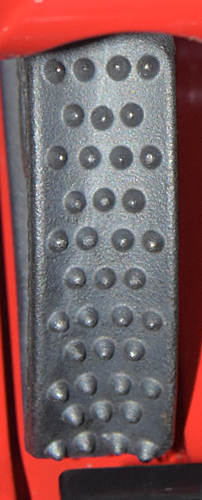 I acquired my Version B pair from Inner Mountain Outfitters in 1991. On Rope 1 donated another left-hand ascender in 2021.
I acquired my Version B pair from Inner Mountain Outfitters in 1991. On Rope 1 donated another left-hand ascender in 2021.
Version B is 129 mm. tall, 78 mm. wide, 29 mm. thick, and weighs 187 g. The rope channel is 18 mm. wide. The cam radius increases from 41 to 57 mm. over an angle of 42°, giving a 25° cam angle. The tooth pattern is (4.3)^5(4).
Version B does not have any stampings on the frame.
The only difference between Version A and Version B
is that Version A has a bright steel cam, and
Version B has a dark steel cam. Functionally, Version A and Version B are identical.
[ Top
| Version A
| Version B
| Version D
| Version E
| Return to H.E.C. Ascenders
]
Version C
(#1518, 1518)
Technical Details
 I acquired my CMI Small UltrAscender, Version C from On Rope 1 in 2009 UIS/NSS Convention. I acquired another pair in 2017 as part of Bob Thrun’s collection.
I acquired my CMI Small UltrAscender, Version C from On Rope 1 in 2009 UIS/NSS Convention. I acquired another pair in 2017 as part of Bob Thrun’s collection.
Version C is 130 mm. tall, 77 mm. wide, 28 mm. thick, and weighs 183 g. The rope channel is 18 mm. wide. The cam radius increases from 41 to 57 mm. over an angle of 42°, giving a 25° cam angle. The tooth pattern is (4.3)^5(4).
The only difference between Versions B and C is that the cam pivots on a pin in Version B and a rivet in Version C. I much prefer the earlier design, since it facilitated user maintainance.
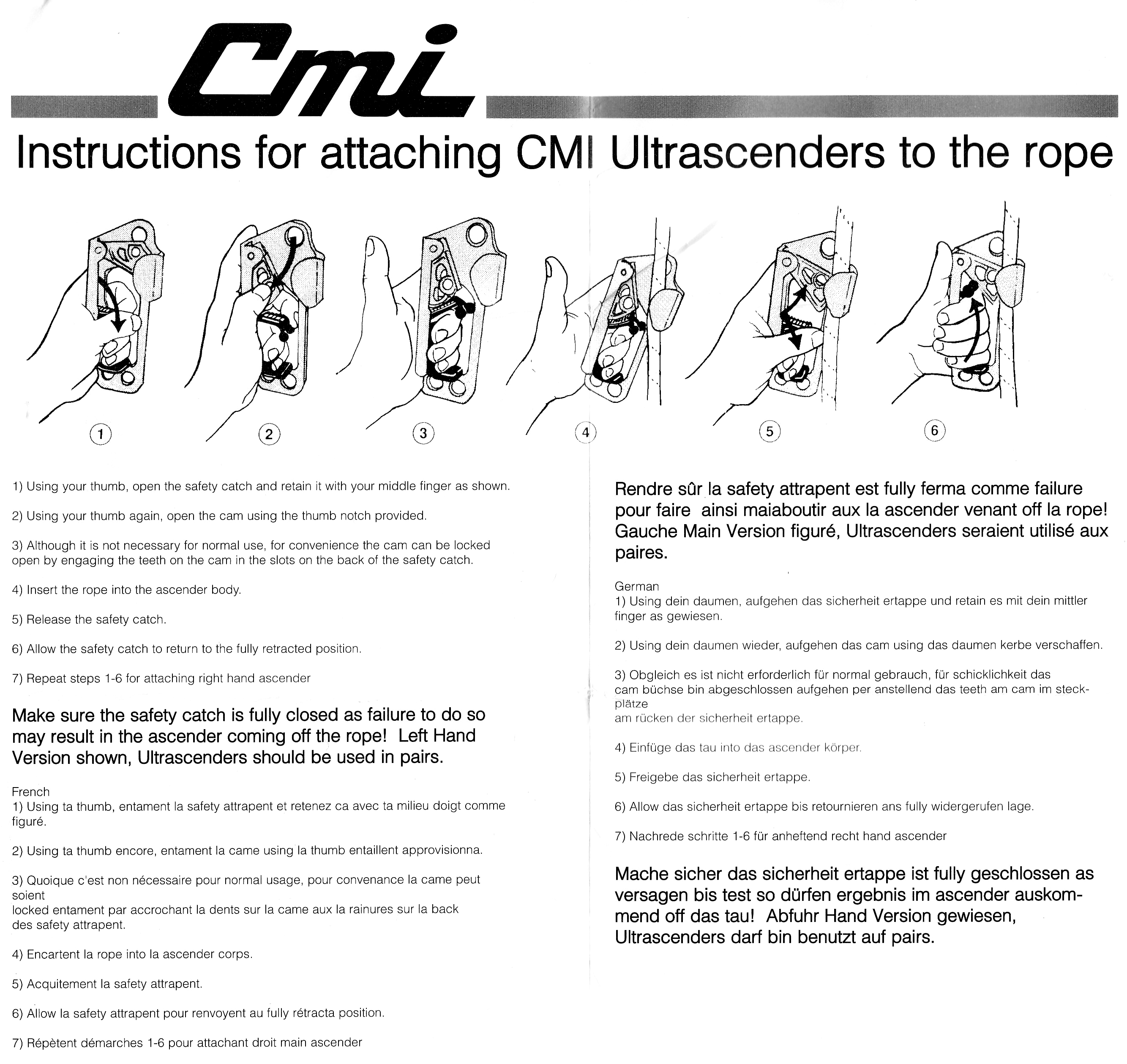
[ Top
| Version A
| Version B
| Version C
| Version E
| Return to H.E.C. Ascenders
]
Version D
(#229, 3538)
Technical Details

 I acquired my Version D from On Rope 1 at the 2007 NSS Convention. Jay Kennedy gave me a blue right-handed one at the 2022 NSS Convention.
I acquired my Version D from On Rope 1 at the 2007 NSS Convention. Jay Kennedy gave me a blue right-handed one at the 2022 NSS Convention.
Version D is 130 mm. tall, 77 mm. wide, 28 mm. thick, and weighs 189 g. The rope channel is 18 mm. wide. The cam radius increases from 41 to 57 mm. over an angle of 42°, giving a 25° cam angle. The tooth pattern is (4.3)^5(4).
Version D has a semi-tubular rivet for a cam axle, which makes it harder
to replace the cam.
Version D has a metal safety. The safety on Version D has a smoother finish
than the earlier ones, and it is missing the checkered surface
on the safety’s tabs. A thick layer of black paint covers the safety.
Version D does not have any stampings on the frame.
The safety design is similar to the earlier versions, so it is still somewhat awkward. The lack of checkering makes the safety more slippery than the older plastic ones, but at least the tabs should not break off as easily. It is a shame that CMI did not completely overhaul the safety
design instead, so I did that myself.
[ Top
| Version A
| Version B
| Version C
| Version D
| Return to H.E.C. Ascenders
]
Version E
(#3596)
Technical Details
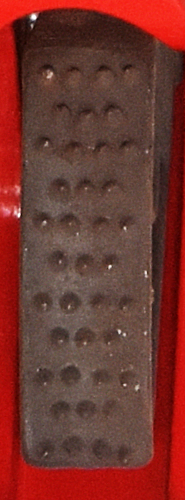 Kris Kirk of CMI sent me this pair of ascenders in 2023.
Kris Kirk of CMI sent me this pair of ascenders in 2023.
Version E is 130 mm. tall, 77 mm. wide, 28 mm. thick, and weighs 189 g. The rope channel is 18 mm. wide. The cam radius increases from 41 to 57 mm. over an angle of 42°, giving a 25° cam angle. The tooth pattern is (4.3)^5(4).
Version E has a semi-tubular rivet for a cam axle, which makes it harder
to replace the cam.
Version E has a redesigned metal safety milled from aluminum alloy.
Version E does not have any stampings on the frame.
When I visited CMI in 2017, I showed Kris and Ron Kirk the modified safety that I had been using on my CMI Ultrascenders since 1991. After demonstrating its advantages, Kris asked me to send him a drawing. I did so shortly afterward, and also sent a "prototype" copied from the ones that I've been using for years. In March 2023, Kris sent me the a note saying that CMI had adopted my design. He wrote:
"I remember having you here and passing along the idea about your safety. I set it on my filing cabinet and never forgot about it. We had to get through our current run of old safeties before we could implement the new design you submitted. Long story short, all large and small ultrascenders will now have these safeties in them. I wanted to thank you for bringing us this idea as the old safeties were outsourced and were cast and these new safeties are now made in house which is a huge plus for us as we can make them in much smaller batches now."
It was my pleasure to be able to help.
[ Top
| Version A
| Version B
| Version C
| Version D
| Version E
]



